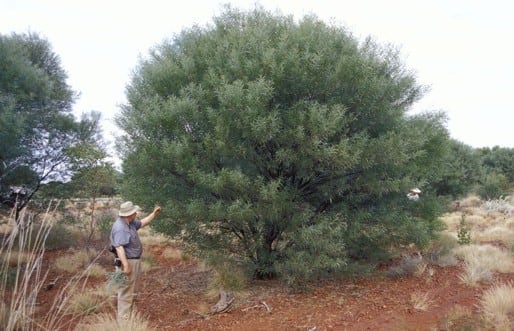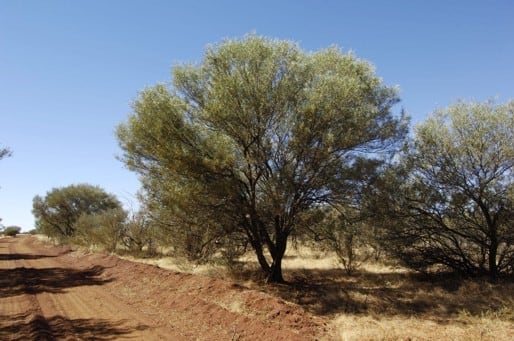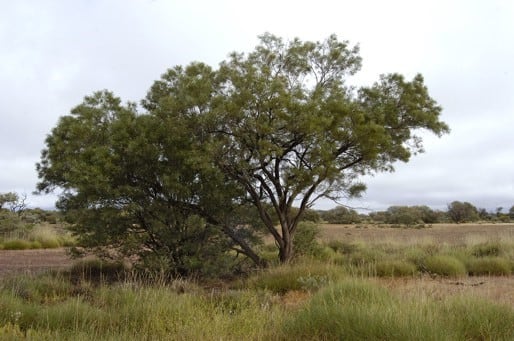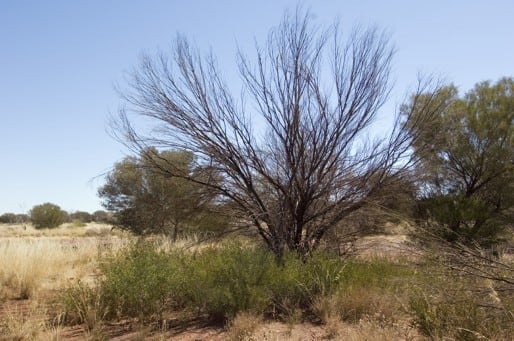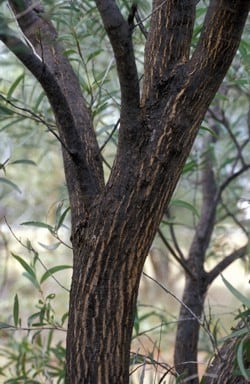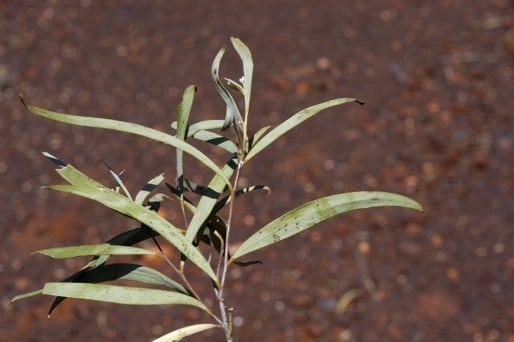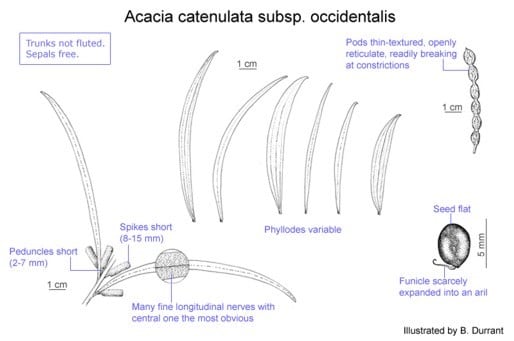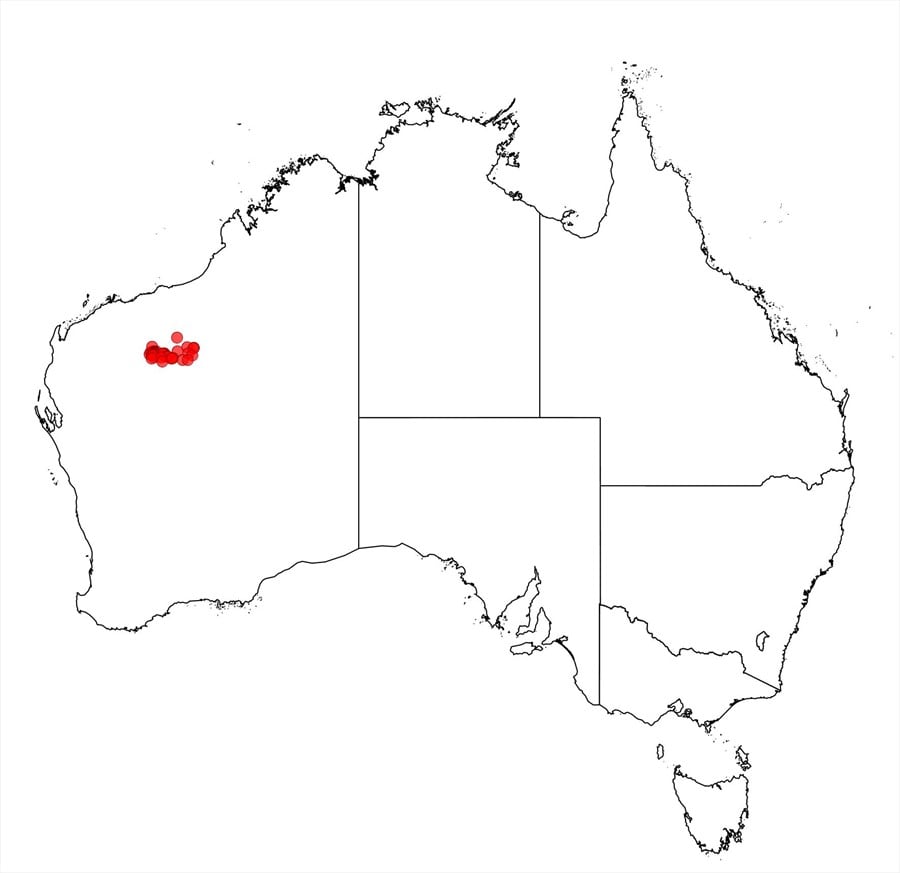Acacia catenulata subsp. occidentalis Maslin
WATTLE
Acacias of Australia
Common Name
Western Bendee, Black Mulga
Family
Fabaceae
Distribution
Confined to the Pilbara region in north-western W.A. where it extends from the central Hamersley Ra. to Newman with disjunct occurrences on Balfour Downs Stn and Roy Hill Stn.
Description
Tree to 8 (–10) m high; trunk not fluted. New shoots not resinous, densely sericeous by silvery white or pale yellow hairs. Peduncles 2–7 mm long; spikes 8–15 mm long. Pods 4–6 (–8) mm wide.
Habitat
Occurs on hardpan flats or gently undulating terrain along diffuse watercourses or colluvial fans, sometimes extending to dry low rocky hills or ridges. Grows in (sometimes stony) shallow, red-brown sandy loam, clay-loam, deep red loamy duplex soils or self-mulching cracking clays in open to moderately closed low woodlands of Eucalyptus victrix and/or with Mulga (‘A. aneura group’ of species). Often forms dense populations.
Specimens
W.A.: 31 km E of Newman on rd to Port Hedland, B.R.Maslin 7234 (MEL, PERTH); Ethel Creek Stn, B.R.Maslin 8527 (PERTH); Balfour Downs Stn, B.R.Maslin 8536 (PERTH); Ore Body 24, Ophthalmia Ra., E end of Hamersley Ra., 20.9 km E of Mt Newman, 27.6 km W of Shovelanna Hill, 15 km NNW of Newman Airport, S.vanLeeuwen 3831 (CANB, PERTH).
Notes
May resemble A. subcontorta with which it is sometimes sympatric.
Perhaps conspecific with the typical subspecies which occurs in Qld and N.T.; however, subsp. catenulata seemingly grows to a taller plant and has deeply fluted trunks, fide L.Pedley, Austrobaileya 1: 145 (1978), and sometimes has resinous new shoots that are never yellow-hairy.
FOA Reference
Flora of Australia Project
Author
Revised by B.R.Maslin
This identification key and fact sheets are available as a mobile application:
URL: https://apps.lucidcentral.org/wattle/
© Copyright 2018. All rights reserved.
